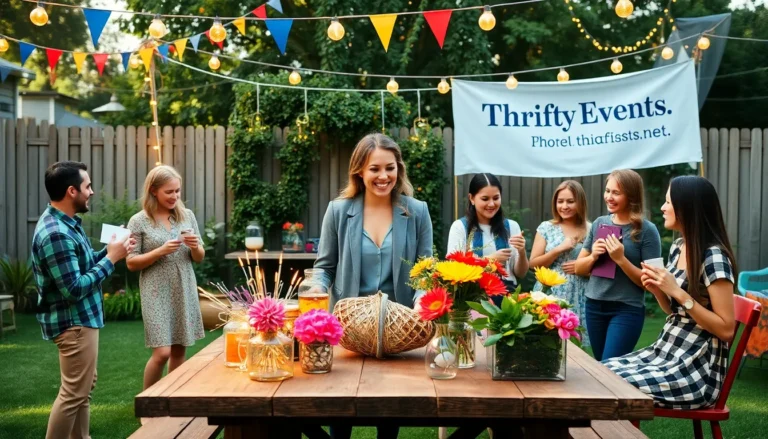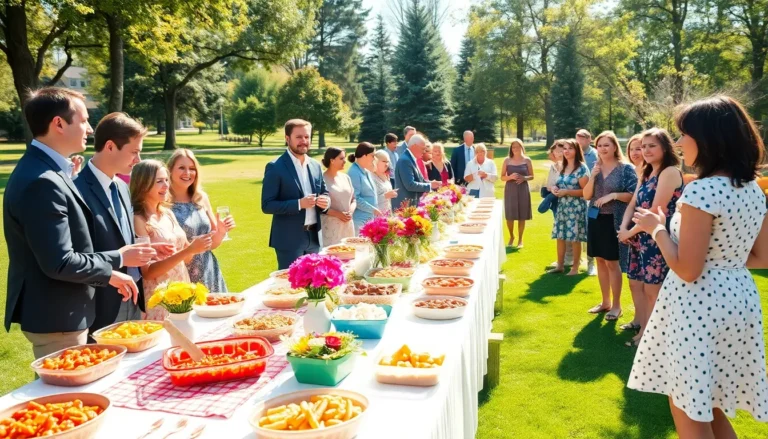Ever dreamed of creating your own virtual world where players can unleash their creativity? Roblox makes that dream a reality! With millions of users eager to explore new games, the platform offers a golden opportunity for aspiring game developers. Whether you want to build a thrilling adventure or a cozy café simulation, the possibilities are endless.
Table of Contents
ToggleGetting Started With Roblox Game Development
Roblox provides a user-friendly platform for aspiring game developers to create interactive experiences. Several key steps facilitate this process, beginning with the essential tools needed.
Understanding Roblox Studio
Roblox Studio serves as the primary development environment. This software allows users to build, test, and publish their games. Various components like the Explorer and Properties panels help manage game elements seamlessly. Users can drag and drop assets from the Roblox library or create custom models using Lua scripting. Familiarizing oneself with the interface and tools can enhance the development experience significantly. Tutorials and documentation available on the Roblox Developer Hub offer additional guidance for newcomers.
Creating a Roblox Account
Creating a Roblox account marks the first step to game development. A simple registration process requires basic information like a username and password. Users can choose to provide an email for account recovery. Setting up an account grants access to Roblox Studio and the extensive asset library. After creating an account, users can explore existing games to gain inspiration and understand design elements. Completing this step enables participation in the vibrant Roblox community, fostering collaboration and learning.
Game Design Basics
Understanding game design basics is vital for creating a successful game on Roblox. Aspiring developers should focus on several key elements.
Defining Your Game Concept
A clear game concept sets the foundation for development. Start by brainstorming ideas that spark interest and align with potential players’ preferences. Identifying core mechanics is essential, as they govern gameplay and player interaction. Consider incorporating unique features that distinguish the game from others. Feedback from friends or the Roblox community can refine the concept, ensuring it captures attention. Creating a design document can also help outline objectives, narrative elements, and gameplay flow.
Choosing a Game Genre
Selecting a game genre influences gameplay mechanics and audience reach. Popular genres on Roblox include adventure, obby (obstacle course), role-playing, and simulation. Each genre presents unique opportunities for creativity and player engagement. Developers should analyze existing games within these genres to identify trends and player preferences. Balancing originality with familiar elements can attract more players. Incorporating aspects like multiplayer interactions may enhance excitement and replay value. Experimenting with different genres can lead to discovering a perfect fit.
Building Your Game
Creating an engaging game on Roblox involves utilizing effective tools and resources. Developers gain access to unique features that enhance gameplay experiences.
Utilizing Roblox Terrain Tools
Terrain tools offer the ability to shape landscapes in creative ways. Users can create mountains, rivers, and valleys to enhance visual appeal. Familiarity with different terrain materials helps in creating realistic environments. Sculpting tools provide options for adjusting textures, colors, and heights, contributing depth to game designs. Choosing appropriate terrain elements enhances player immersion. Additionally, terrain tools support dynamic lighting, which can change gameplay depending on the time of day in the game world.
Importing Assets and Models
Importing assets expands the creative possibilities for game developers. Users can source models from the Roblox library or upload custom designs. Utilizing free models in Roblox can speed up development, but ensuring quality is crucial. Checking for compatibility with game mechanics helps avoid potential issues. Applying unique textures and sounds can personalize experiences for players. Importing animations adds further interactivity, allowing for more engaging gameplay. Using a variety of assets creates a richer gaming environment and attracts diverse players.
Scripting Your Game
Scripting in Roblox involves using Lua, a programming language designed for ease of use. Developers create interactive gameplay elements through Lua scripts, which handle objects, events, and player actions. Learning Lua is essential, as it enables developers to implement game mechanics effectively. Numerous online resources and tutorials offer guidance, making it easier for beginners to grasp the basics. Engaging with the Lua community on various forums can provide insights and support. Knowing how to navigate Lua’s syntax and functions significantly enhances the game development process.
Introduction to Lua Programming
Lua programming is fundamental to scripting in Roblox. This lightweight language is user-friendly and versatile, making it ideal for game development. Developers begin by familiarizing themselves with concepts like variables, functions, and control structures. Variables store data, while functions perform specific tasks, and control structures manage the flow of scripts. Simple examples, such as displaying messages or moving objects, allow developers to practice these concepts. Experimentation with Lua in Roblox Studio helps reinforce understanding and builds a solid foundation for creating more complex scripts.
Common Scripts for Gameplay
Utilizing common scripts enhances gameplay and interactivity. Respawn scripts allow players to re-enter the game after their character’s defeat, while score tracking keeps the game competitive. Developers implement GUI (Graphical User Interface) scripts to create menus, health bars, and inventory systems. Additionally, velocity scripts can control the movement speed of characters, ensuring smoother gameplay experiences. Trigger scripts manage events, such as opening doors or activating traps. Mastering these common scripts helps developers engage players and establish a dynamic gaming environment.
Testing and Publishing Your Game
Testing is a crucial step in game development on Roblox. Developers can ensure their game functions as intended by utilizing debugging and testing techniques effectively.
Debugging and Testing Techniques
Debugging helps identify errors or issues within the game. Use the built-in output window in Roblox Studio to track errors and execute print statements for thorough testing. Incorporating test players lets developers gather feedback on gameplay mechanics and experiences. Adjusting settings under “Game Settings” allows for different testing environments. Implement performance metrics, such as frames per second, to assess whether the game runs smoothly on various devices. Pay attention to player feedback during test sessions to refine gameplay elements further.
Publishing Your Game to Roblox
Publishing marks the transition from development to player interaction. Access the “File” menu in Roblox Studio and select “Publish to Roblox As.” Developers need to provide essential game information, including the game’s name, description, and genre. Setting proper permissions ensures the target audience can access the game. After finalizing details, click “Create” to publish the game, and it becomes available to the Roblox community. Regular updates post-launch can keep players engaged and enhance overall gameplay.
Promoting Your Game
Promoting a game on Roblox requires strategic engagement and community involvement. It’s vital to maximize visibility among the vast user base.
Utilizing Social Media and Communities
Harnessing social media platforms can significantly boost game exposure. Developers should create accounts on Twitter, Instagram, and TikTok to share game updates and visual content. Engaging posts that showcase gameplay or behind-the-scenes development can attract interest. Joining Roblox-based Discord servers or Facebook groups provides a space to connect with fellow developers and potential players. Networking within these communities allows for sharing tips, collaborating on projects, and enhancing visibility. Sharing game links and promotions during peak gaming hours can increase player engagement further.
Engaging with Players and Feedback
Interacting directly with players encourages a loyal community. Developers should actively respond to comments and messages across platforms. Running contests or incentives for feedback leads to improved player experience and game quality. Implementing suggestions demonstrates a commitment to player satisfaction and fosters trust. Conducting polls or surveys about potential game updates helps gauge player interests. Regularly updating the game based on feedback ensures an evolving experience that keeps players returning for more.
Creating a game on Roblox opens up a world of possibilities for aspiring developers. With its user-friendly tools and vast asset library, anyone can bring their unique ideas to life. By focusing on game design fundamentals and mastering scripting with Lua, developers can craft engaging experiences that captivate players.
Testing and refining games is essential to ensure a smooth experience, while effective promotion strategies can help attract a loyal audience. Staying connected with the Roblox community and incorporating player feedback will not only enhance gameplay but also foster long-term engagement. Embracing these steps will empower developers to thrive in the vibrant Roblox ecosystem.






